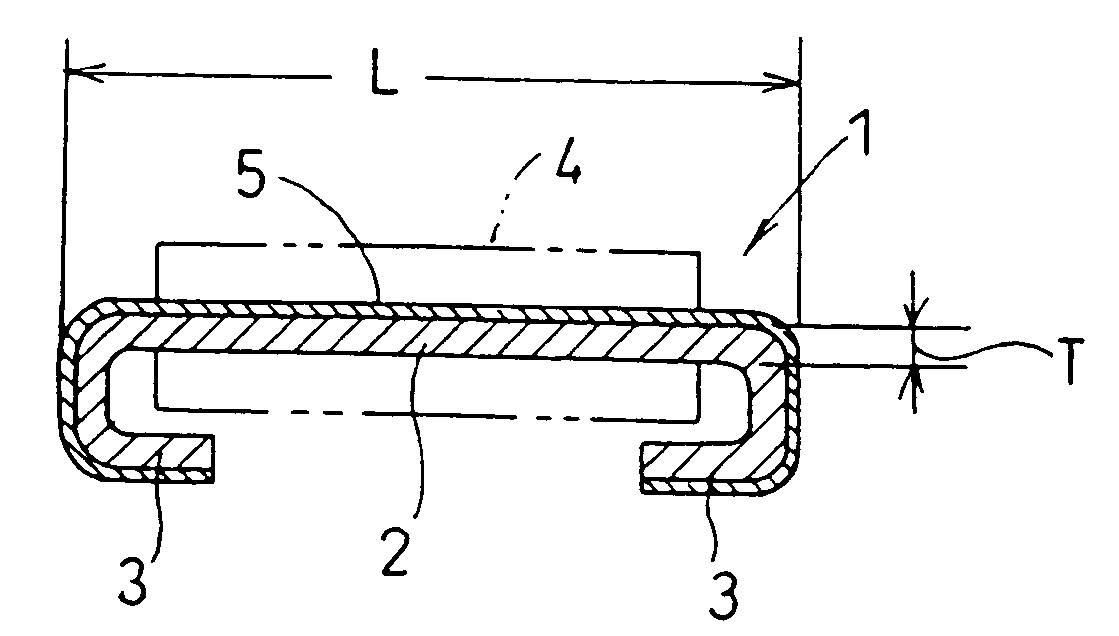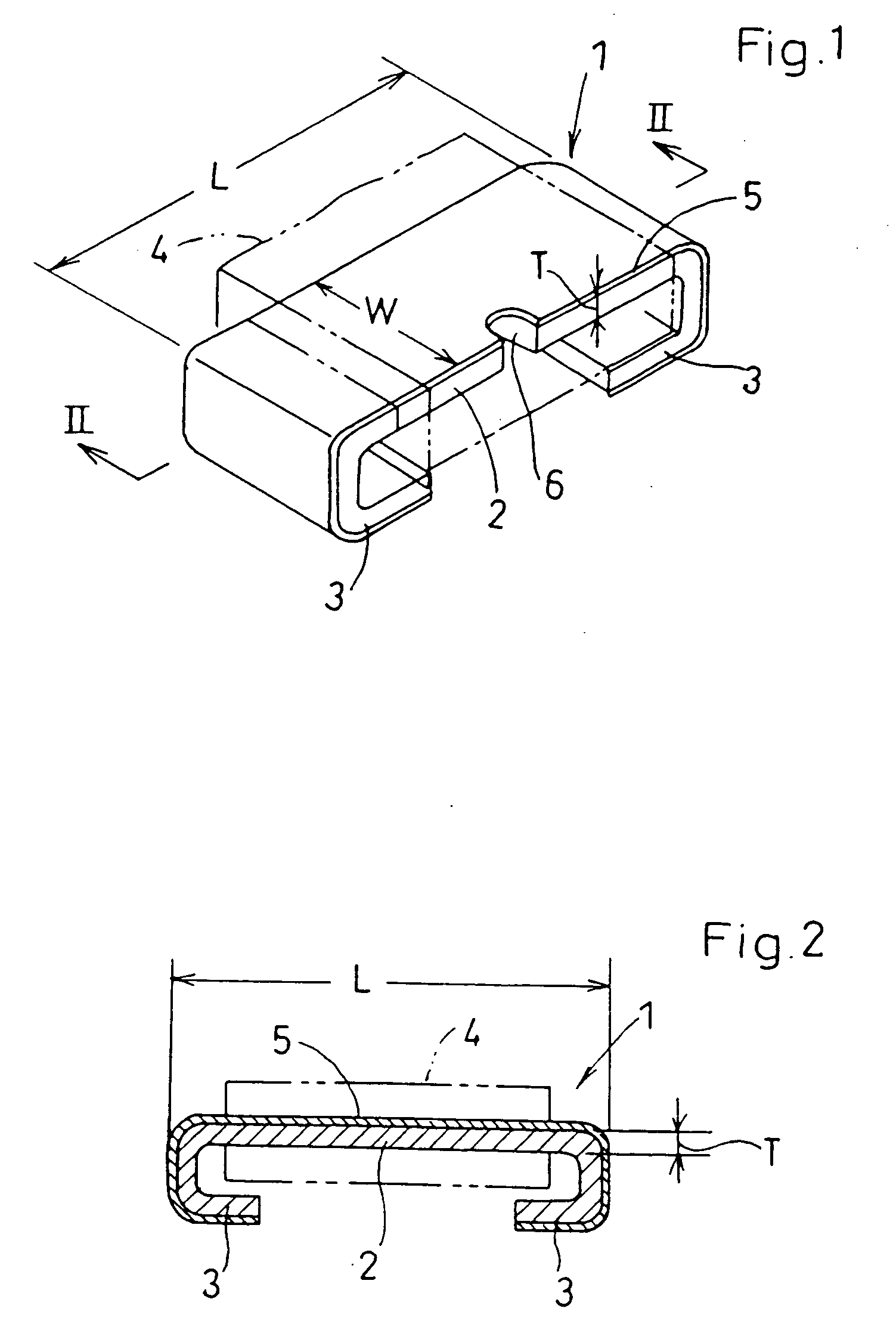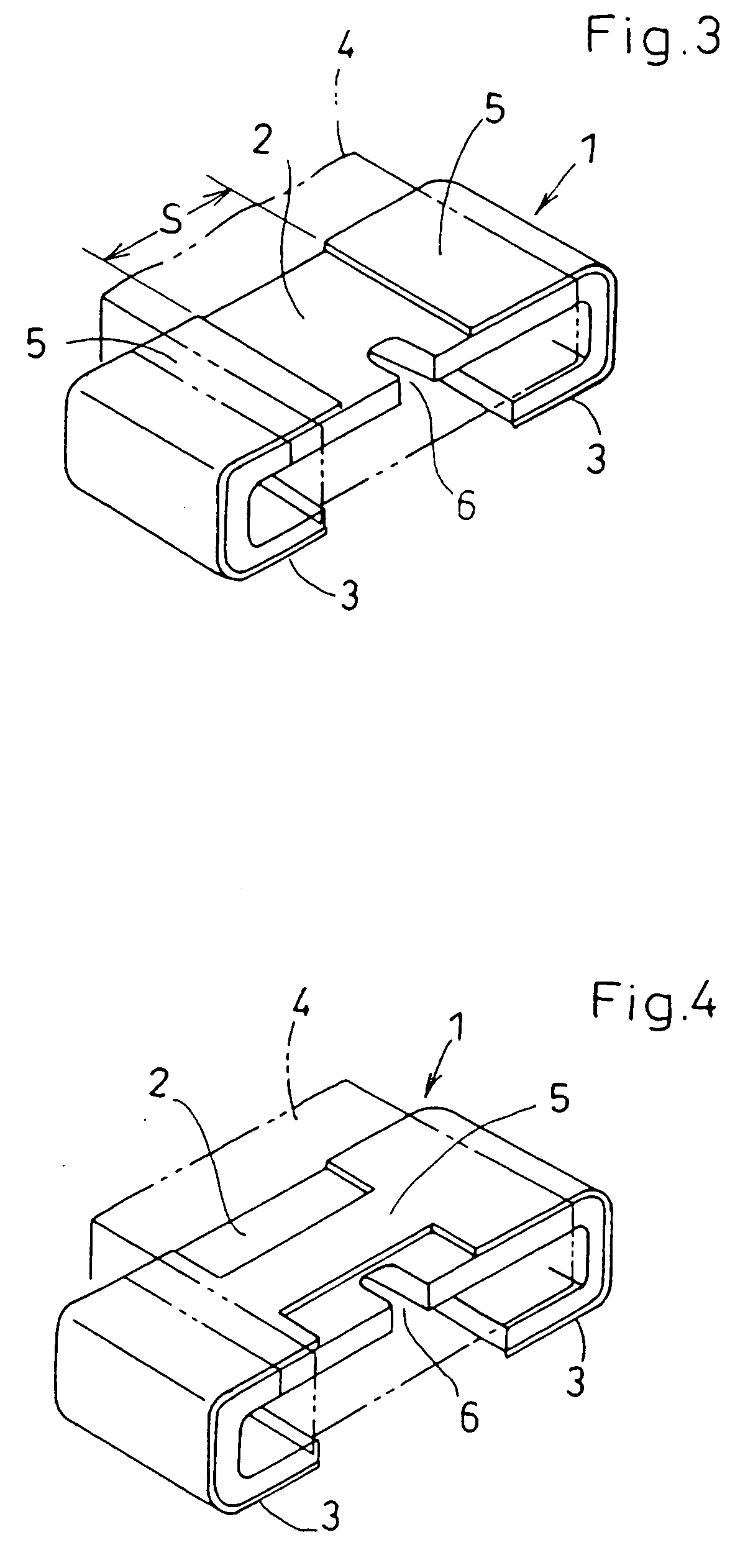Chip resistor having low resistance and its producing method
a technology of resistors and chips, applied in the field of chip resistors, can solve the problems of increasing the temperature coefficient of resistance increasing the thickness of the resistor element, and increasing the weight so as to reduce the thickness of the connection terminal electrode, and reduce the height of the chip resistor.
- Summary
- Abstract
- Description
- Claims
- Application Information
AI Technical Summary
Benefits of technology
Problems solved by technology
Method used
Image
Examples
first embodiment
[0071]FIGS. 1-2 illustrate a chip resistor according to a
[0072] The chip resistor 1 includes a resistor element 2 which is a rectangular solid having a length L, width W, and a thickness T, a pair of connection terminal electrodes 3 which are integrally formed with the resistor element 2 at both ends of the resistor element 2, each electrode being bent toward the lower surface of the resistor element 2, and an insulator 4 made of heat-resistant synthetic resin or glass for covering the resistor element 2.
[0073] The resistor element 2 and the terminal electrodes 3 are made of an alloy of a metal with low resistance (hereinafter referred to as low-resistant metal) and a metal with high resistance (hereinafter referred to as high-resistant metal), such as copper-nickel alloy, nickel-chrome alloy, or iron-chrome alloy.
[0074] As readily understood, one or both of such low-resistant metal and high-resistant metal may be replaced by an alloy of a low-resistant metal and a high-resistant ...
second embodiment
[0087]FIGS. 12-13 illustrates a chip resistor 11 according to the present invention.
[0088] The chip resistor 11 includes a resistor element 12 which is a rectangular solid having a length L, width W, and a thickness T, a pair of connection terminal electrodes 13 fixed to the ends of the lower surface of the resistor element 12, and an insulator 14 for covering the resistor element 12.
[0089] Similarly to the first embodiment, the resistor element 12 is made of an alloy composed of a low resistance (hereinafter referred to as low-resistant metal) and a metal with high resistance (hereinafter referred to as high-resistant metal) such as copper-nickel alloy, nickel-chrome alloy, or iron-chrome alloy.
[0090] On the other hand, the terminal electrodes 13 are made of an alloy with resistance lower than that of the alloy making the resistor element 12, or of a pure metal such as copper.
[0091] The surface of the resistor element 2 is formed with a plating layer 15 which is made of a pure m...
third embodiment
[0101] the present invention is described below referring to FIGS. 20-26. FIG. 20 illustrates a resistor element 22 which is a rectangular solid having a length L, width W, and thickness T. The resistor element 22 is made of an alloy composed of a metal with low resistance (hereinafter referred to as low-resistant metal) and a metal with high resistance (hereinafter referred to as high-resistant metal), such as copper-nickel alloy, nickel-chrome alloy, or iron-chrome alloy, for example. A metal plate with a thickness T made of such alloy is formed into a rectangle having a length L and a width W.
[0102] The resistor element 22 is formed with a plating layer 25 which is made of a pure metal such as copper or silver with resistance lower than that of the alloy making the resistor element 22. Similarly to the first embodiment, the resistance between connection terminal electrodes 23, 23′ is lowered by the pure metal plating layer 25 which is formed on the alloy resistor element 2. Thus,...
PUM
 Login to View More
Login to View More Abstract
Description
Claims
Application Information
 Login to View More
Login to View More - R&D
- Intellectual Property
- Life Sciences
- Materials
- Tech Scout
- Unparalleled Data Quality
- Higher Quality Content
- 60% Fewer Hallucinations
Browse by: Latest US Patents, China's latest patents, Technical Efficacy Thesaurus, Application Domain, Technology Topic, Popular Technical Reports.
© 2025 PatSnap. All rights reserved.Legal|Privacy policy|Modern Slavery Act Transparency Statement|Sitemap|About US| Contact US: help@patsnap.com



